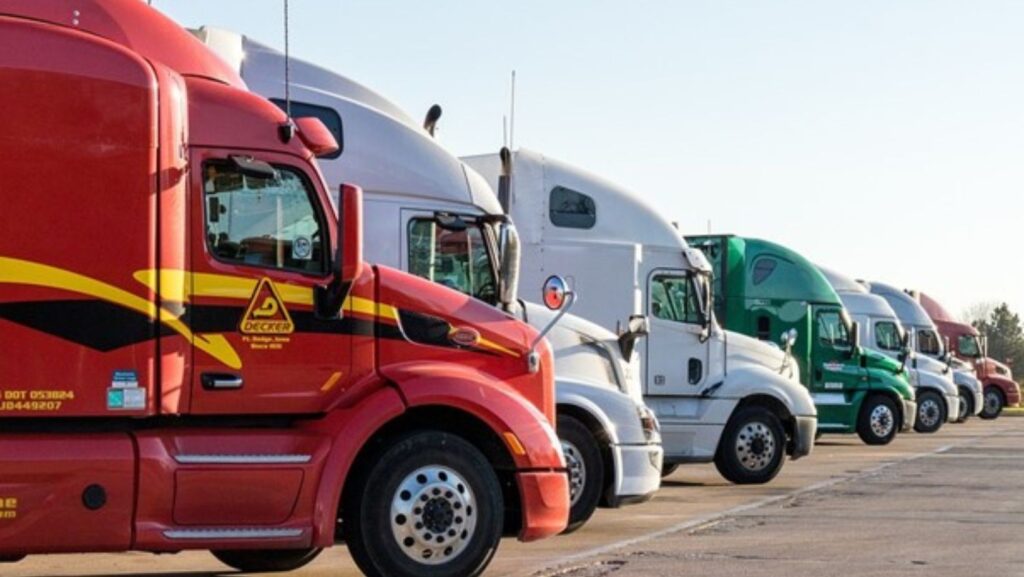The trucking industry faces numerous challenges, from managing operational costs to ensuring timely deliveries. Fortunately, advancements in technology offer innovative solutions that can significantly enhance efficiency and productivity. By integrating cutting-edge tech tools, businesses can streamline their trucking operations, reduce unnecessary expenses, and improve overall service quality. The following article explores various technological innovations and how they can be leveraged to optimize trucking operations, ultimately transforming the way we transport goods.
GPS Tracking Cameras
One of the most significant advancements in trucking technology is GPS tracking cameras. These devices use both real-time GPS tracking and video recording to monitor the location and status of trucks on the road. With these cameras, fleet managers can track their vehicles’ movements, ensuring they follow designated routes and avoid any unauthorized detours. They also provide insight into driver behavior, allowing for better training and identifying areas for improvement.
GPS cameras can help with accident prevention and investigation. In the event of a collision or other incident, fleet managers can quickly access video footage to determine what happened and take necessary action. This not only promotes safety but also helps reduce the cost of truck accidents for businesses. It also aids in insurance claims and dispute resolution.
Telematics Systems
Telematics systems are revolutionizing how trucking companies manage their fleets. By combining telecommunications and informatics, these systems provide detailed insights into vehicle usage, driver behavior, and engine diagnostics.

This data empowers fleet managers to make informed decisions regarding maintenance schedules, which can prevent costly breakdowns and minimize downtime. Additionally, monitoring fuel consumption and driving habits enables companies to implement fuel-saving strategies, increasing overall efficiency.
Another advantage of telematics is its role in driver safety. Insights from telematics data can highlight instances of harsh braking, rapid acceleration, or excessive idling. This information is invaluable for designing targeted training programs to enhance driver performance and safety. Furthermore, telematics systems can assist in route optimization, guiding drivers along the most efficient and safe paths. This not only improves delivery times but also reduces the wear and tear on vehicles.
Automated Dispatching
Automated dispatching systems have transformed the way trucking companies allocate resources and plan routes. By automating the dispatch process, companies can ensure that the most appropriate vehicle is assigned to each job based on location, capacity, and driver availability. This minimizes the risk of errors and maximizes operational efficiency by cutting down on unnecessary mileage and fuel consumption.
Automated dispatching systems enhance communication between drivers and dispatchers. They provide real-time updates about traffic conditions, road closures, and delays, allowing for swift adjustments to schedules. This dynamic adaptability is crucial for delivering goods on time and maintaining high customer satisfaction levels. By streamlining communication and planning, automated dispatching minimizes lag times and maximizes productivity.
Electronic Logging Devices (ELDs)
The implementation of Electronic Logging Devices (ELDs) is a game-changer in compliance and safety for trucking operations. ELDs automatically record driving time and other essential data, ensuring adherence to hours-of-service regulations. This technology reduces the administrative workload of manual logkeeping and safeguards against violations, which can result in costly fines and penalties.
ELDs contribute to enhancing driver safety and well-being. By efficiently tracking driver hours, they prevent overworking and the associated fatigue-related risks. Managers can utilize the data collected by ELDs to ensure that drivers are getting adequate rest breaks, thus maintaining optimal safety standards. Furthermore, the transparent data flow aids in fostering trust between employers and drivers, promoting better working relationships.
Predictive Maintenance
Predictive maintenance technologies offer preemptive solutions for maintaining the health of truck fleets. By analyzing data collected from sensors installed on vehicles, predictive maintenance systems can forewarn managers about potential mechanical failures before they happen. This proactive approach minimizes unexpected breakdowns and provides a systematic method for scheduling repairs.

Incorporating predictive maintenance results in significant cost savings. By addressing mechanical issues early, companies can avoid more extensive and expensive repairs in the future. This approach also lengthens the vehicles’ lifespan and maintains their operational efficiency. As a result, companies can allocate resources more strategically, focusing on expansion or other business areas rather than frequent and costly repairs.
Load Optimization
Load optimization technology is essential for maximizing a truck’s cargo capacity without compromising safety or regulatory compliance. These systems analyze cargo dimensions, weight limits, and distribution to devise the most effective loading strategy. By achieving optimal load distribution, companies can mitigate the risk of accidents caused by imbalanced loads, ensuring safe and efficient travel.
Load optimization assists companies in reducing transportation costs. By maximizing cargo space utilization, companies can decrease the number of trips needed to transport goods, thus reducing fuel consumption and labor costs. This efficacy translates into more competitive pricing for customers and higher profit margins for the company. Load optimization also improves operational sustainability by minimizing the environmental impact of excessive fuel consumption and emissions.
Technology offers a plethora of opportunities for optimizing trucking operations. From safety and compliance to efficiency and cost reduction, the integration of tech tools in the trucking industry is transforming how goods are transported. By leveraging these innovations, businesses can stay ahead of the competition and deliver exceptional service to their customers. As technology continues to evolve, we can expect even more innovative solutions that will revolutionize the way we move goods across the country.



